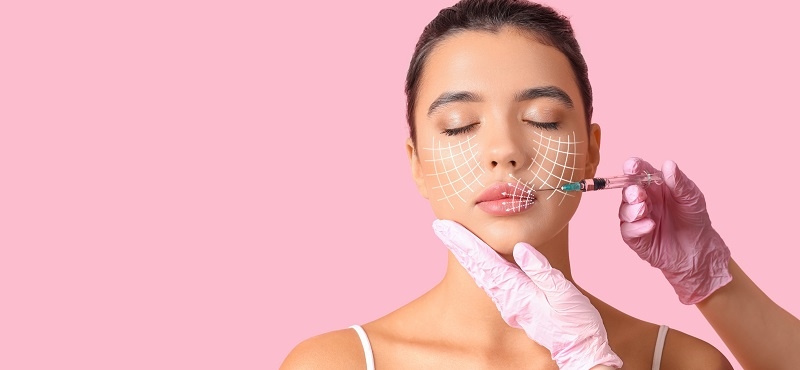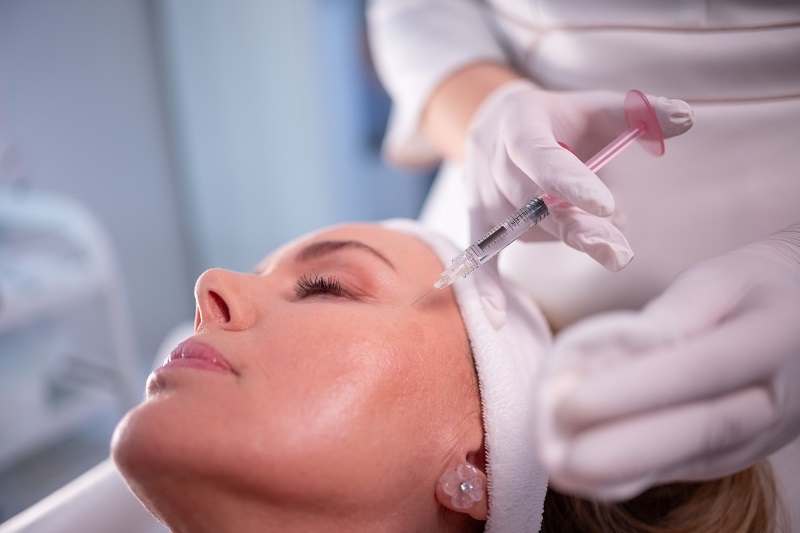
Injectables aren't just for wrinkles anymore. The skincare world in 2025 is laser-focused on hydration—not with another serum, but with something far more potent: injectable moisturizers. Forget surface-level fixes. This is about taking hydration deeper, where your creams and toners can’t reach.
If you’re still catching up, skin boosters are changing how we think about glow. They don’t plump like fillers, and they don’t freeze like Botox. Instead, they dive under your skin to deliver pure, long-lasting hydration. Think of it as injectable hydration therapy—moisturizer, upgraded and needle-delivered.
Let’s clear something up: injectable moisturizers are not just watered-down fillers. They’re hyaluronic acid injections designed to hydrate your skin from within—not reshape your cheekbones.
Unlike traditional dermal fillers that sit deep and build structure, skin boosters are injected into the mid-to-superficial dermis. They don’t change your face—they change your skin. Texture, tone, bounce, and glow? That’s the game.
These treatments aren’t new globally. Europe and Asia have been ahead for years. But now—with FDA approvals and more clinics offering them in the U.S.—2025 is the year these boosters go mainstream.
Top Pick: Cactus & Aloe Juice: Mexican Anti-Aging Skin Care Secrets
Every top injectable moisturizer revolves around one ingredient: hyaluronic acid. It’s what your skin naturally produces to stay plump and hydrated—but by your mid-20s, production slows, and your glow starts fading.
When injected directly into the dermis, hyaluronic acid injections act like a sponge. They bind to water, improve skin elasticity, and deliver that glass-skin radiance no serum can fake.
There’s a reason every major injectable hydration therapy is built around it. It works. And it works fast.
Here’s where it gets exciting: Skinvive by Juvéderm. It’s the first injectable moisturizer approved by the FDA, and it’s already setting a new standard in the U.S.
Unlike fillers, Skinvive doesn’t volumize. It uses lightly cross-linked hyaluronic acid to improve skin texture and hydration. You get smoother, glowier skin for up to six months—with zero risk of looking overdone.
Skinvive is currently FDA-cleared for the cheeks, but many injectors are already using it off-label for the neck, hands, and even under the eyes. If you’re new to skin boosters, this is the one to start with.
Now, let’s talk about the one everyone in Europe swears by: Profhilo.
Unlike Skinvive, Profhilo uses 100% non-crosslinked hyaluronic acid—meaning it spreads out evenly and integrates into the skin like a dream. It doesn’t just hydrate. It also kicks your fibroblasts into gear, stimulating collagen and elastin for firmer, bouncier skin.
Most people do two sessions a month apart, then maintain with one session every 4-6 months. And even though it’s not FDA-approved yet in the U.S., clinics are finding ways to offer it—because the demand is real.
The term "injectable hydration therapy" might sound like marketing, but it's accurate. You’re bypassing the skin barrier entirely and putting moisture exactly where it’s needed—inside the dermis.
This isn’t about instant transformation. It’s about consistently better skin. Less dryness. Fewer fine lines. More radiance. And none of that heavy, artificial look some fillers leave behind.
If you're chasing dewy, glowing skin and your topical products aren't delivering, injectable hydration therapy is what bridges the gap between skincare and in-clinic results.
Most people describe the feeling as mildly prickly, not painful. You’re in and out in under 45 minutes—and back to your day with just a little post-care.
Injectable moisturizers work best for people who want better skin—not a new face.
Ideal candidates include:
Even if you’re in your 20s and just want to protect that natural glow, skin boosters deliver long-term skin health benefits without going overboard.
While cheeks are the official target zone for Skinvive, here’s what top injectors are doing off-label:
Profhilo, in particular, is being used creatively across the body for all-over skin rejuvenation.
Let’s draw the line between the three:
| Treatment | Goal | Volume? | Downtime |
| Skin Boosters | Hydration + texture | No | Low |
| Dermal Fillers | Volume + structure | Yes | Moderate |
| Laser Treatments | Texture + tone | No | Varies |
Injectable moisturizers won’t lift or sculpt your face. They don’t replace fillers. But if your skin looks dull, tired, or dry—even after a full night’s sleep and an expensive routine—skin boosters will actually fix that.

The results build over time. This isn’t a one-and-done. But it’s a skin investment that actually pays off.
You’re not just paying for a syringe—you’re paying for a skilled injector and real results. Here’s what you can expect:
Many clinics offer package pricing or bundles with Botox or filler. But remember: you get what you pay for. Don’t bargain shop your face.
While most people tolerate injectable hydration therapy well, it’s not for everyone.
Avoid if:
This is a medical procedure, not a sheet mask. Choose your injector carefully.
Hydration is no longer just a skincare step. It’s a clinical strategy.
Don’t Miss: Sun Protection for Daily Defence: Top Mexican Sunscreens
You don’t need to change your face to change your skin. Injectable moisturizers give you everything topical creams promise—and never deliver. They’re subtle, smart, and surprisingly affordable in the long run.
Whether you’re starting with Skinvive, traveling for Profhilo, or exploring the world of injectable hydration therapy, the truth is simple: skin boosters are here to stay. And they’re only getting better.
So if glow is the goal in 2025, skip the filters. Get the needle.
This content was created by AI